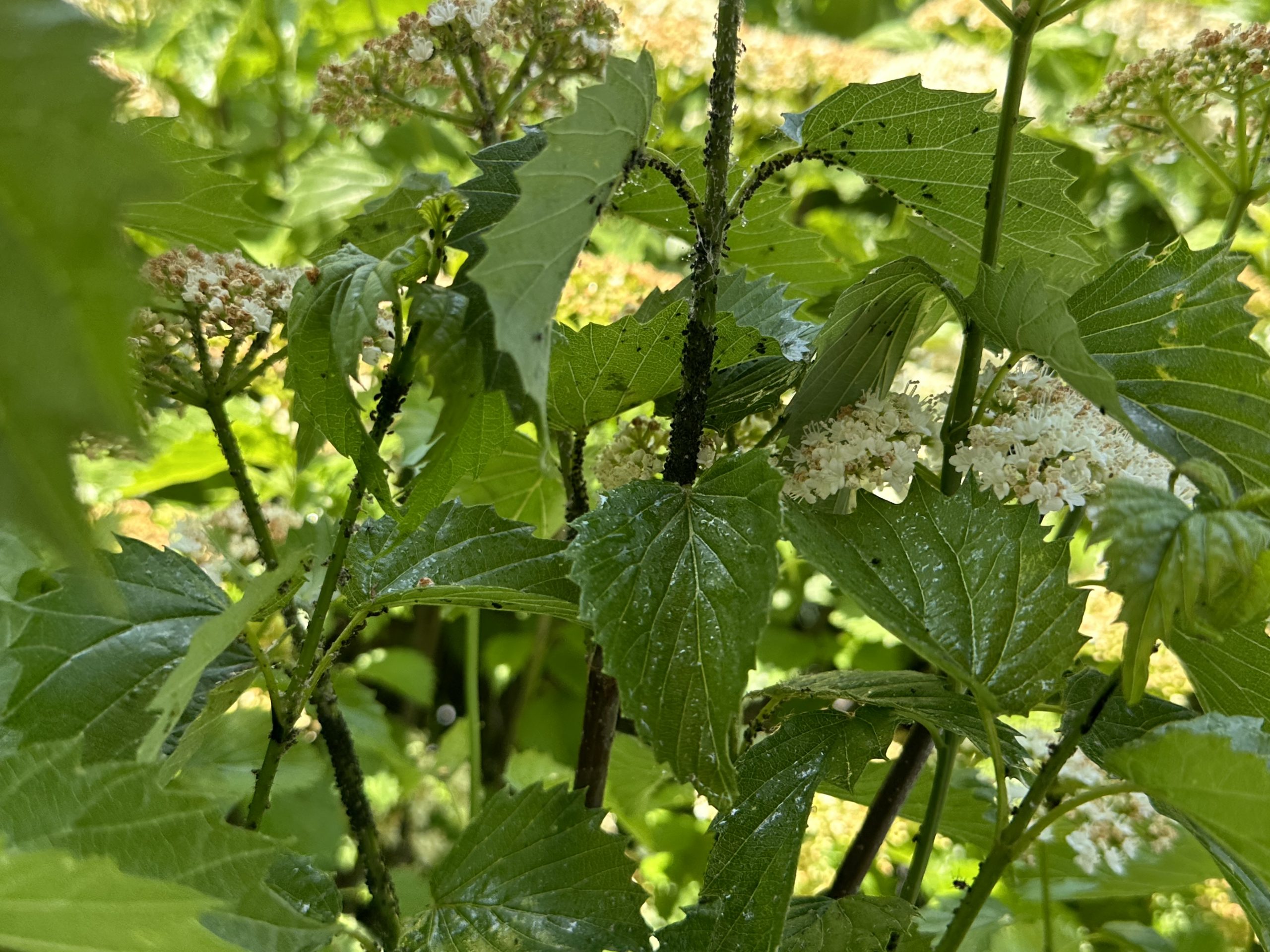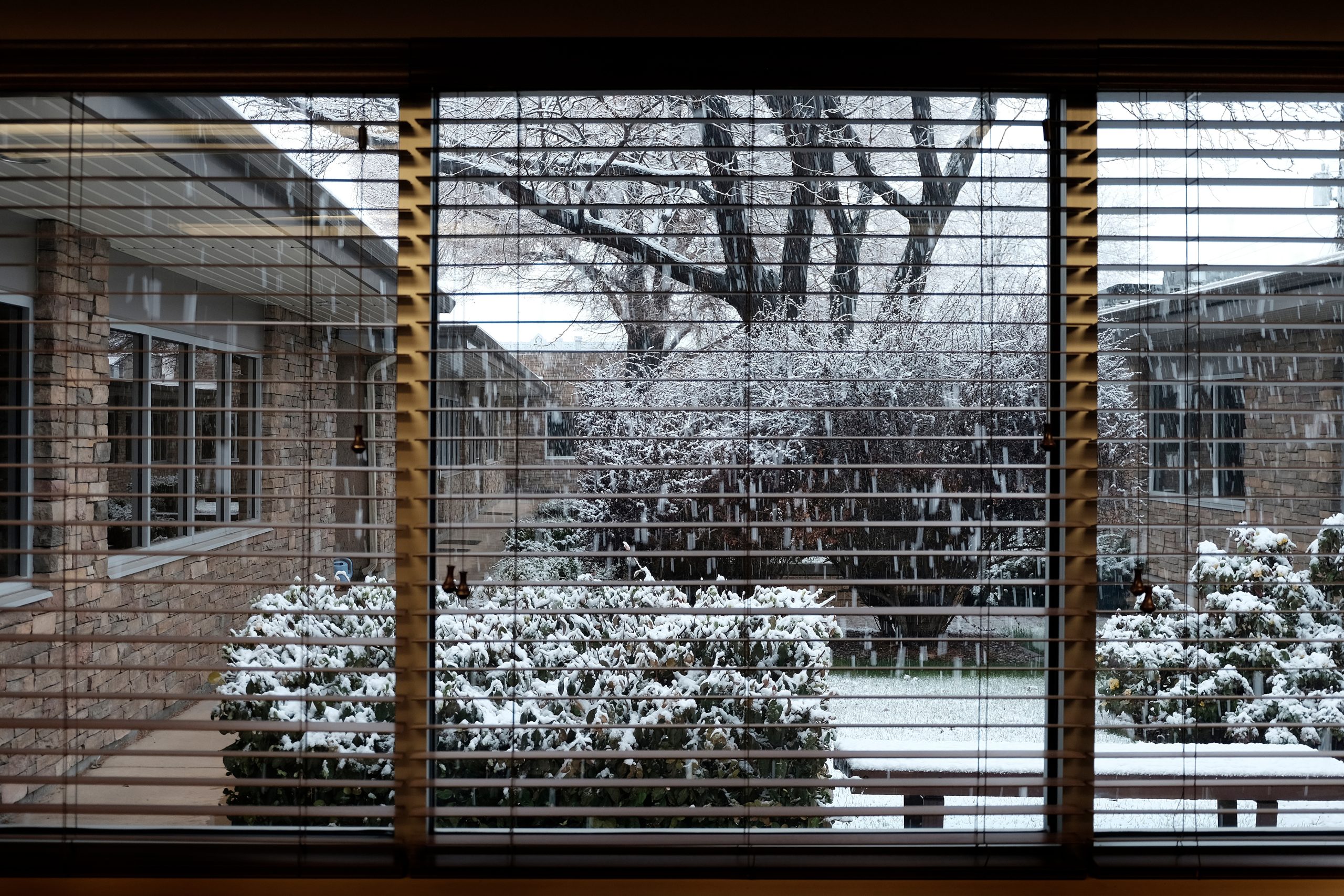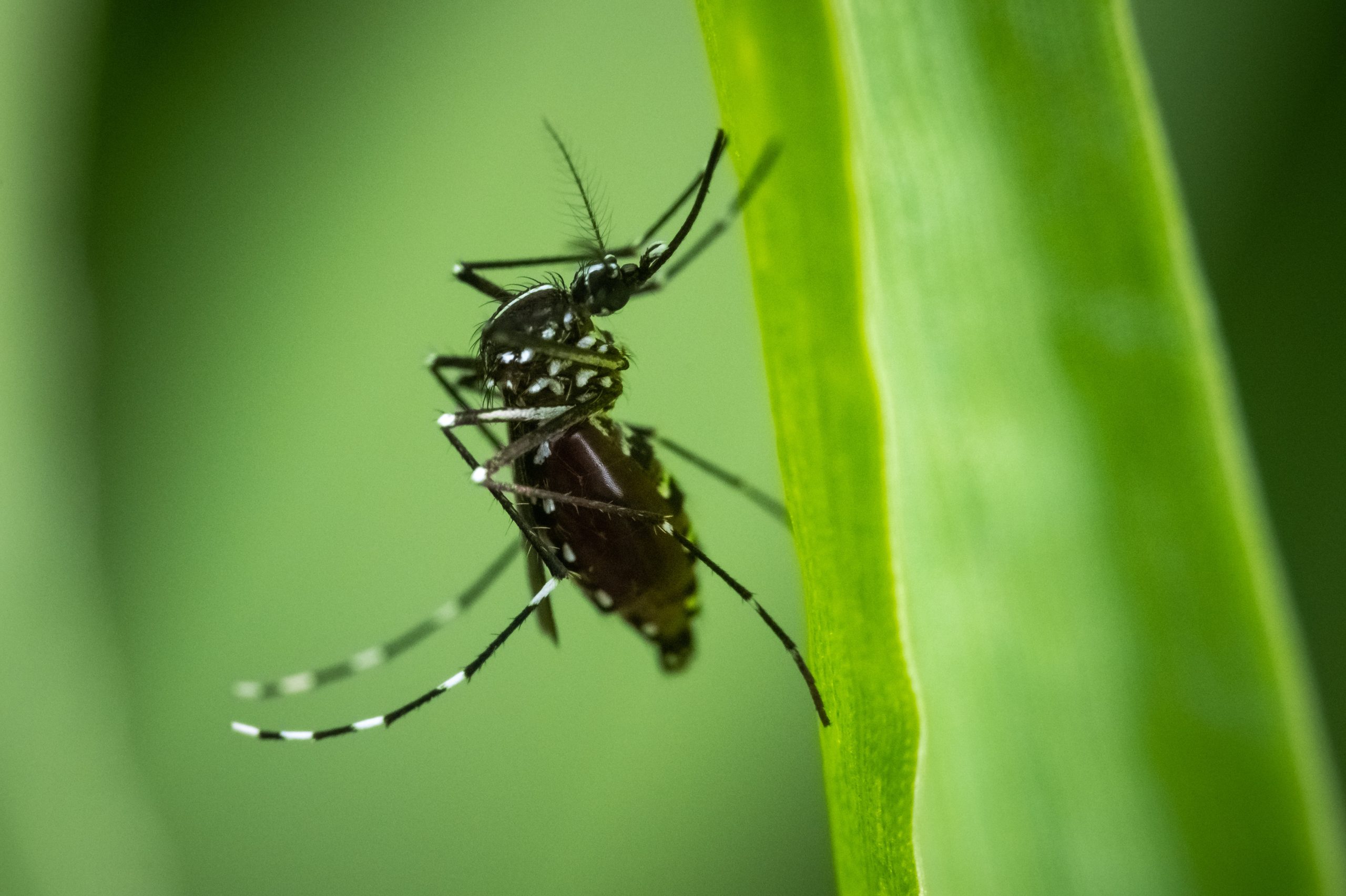Aphids are a well-known pest among vegetable gardeners, but did you know they can also damage ornamental plants? Viburnum aphids (Anuraphis viburnicola) specifically target Viburnum plants, which are popular in residential and commercial landscaping. Close to 200 species make up the Viburnum genus.
Viburnum aphids like to feed on young Viburnum plants because the tissue is tender. For that reason, now is the time that aphids are active in much of our territory. Aphids feed by piercing the plant tissue and sucking the sap out of it. As a result, Viburnum leaves and flowers can curl up at the edges. Curled or cupped leaves are telltale signs of aphid damage.
After digesting the Viburnum sap, aphids excrete a sugary substance known as “honeydew.” This sugary excrement attracts ants and wasps, who like to feed on it. To protect their source of honeydew, the ants and wasps defend the aphids against ladybugs and other natural predators. This symbiotic relationship benefits both the aphids and ants or wasps.
Another sign of an aphid infestation is sooty mold, which grows and feeds on honeydew. Sooty mold includes various fungi that produce black mycelium and resemble soot. If you or a customer notice that their Viburnum appears “dirty,” you may have an aphid problem on your hands.
Aphids have a unique life cycle that allows their populations to grow quickly. Rather than mating and laying eggs, female aphids can reproduce without a male, essentially “cloning” themselves. They give birth to live young. Female nymphs are born already pregnant and can start giving birth to their own young as soon as a week later. Each female aphid can give birth to five or six nymphs a day.

Between aphids’ rapid reproduction and insect allies, it’s not hard to see how their populations can get out of control quickly. With the protection of ants or wasps, an aphid population will continue to feed on the Viburnum until a storm knocks them off the plant or the plant can no longer supply them with enough food.
Viburnum aphid control depends on where the host plant is in its life cycle. Using the right product at the right time ensures the plant and any beneficial insects can continue to grow as usual. For this reason, many insecticides are restricted during Viburnum bloom.
One exception, however, is a Nufarm insect growth regulator called Distance. This product is safe for bees and other beneficial insects, so it can be sprayed during bloom. As an insect growth regulator, Distance uses the active ingredient pyriproxyfen to prevent young aphids from developing into adults. Given the aggressive life cycle of these insects, growth regulators are a very effective strategy for control.
After Viburnum blooms, you have more options for aphid control. Neonicotinoids, which are restricted during bloom, are effective post-bloom insecticides. Dinotefuran (Safari) and imidacloprid are two neonicotinoid options. A non-neonicotinoid option is bifenthrin, which is also labeled for aphid control.
Contact your local sales rep today for help selecting the right product to control aphids in your customers’ landscaping.













